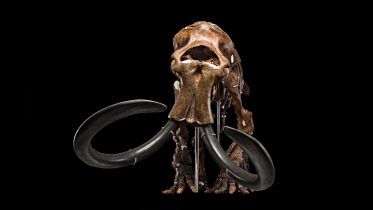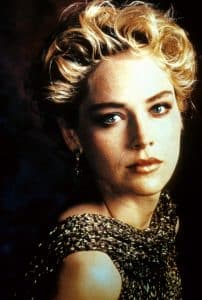
doyouremember.com
Sharon Stone Stole A Script To Audition For ‘Basic Instinct,’ Where Producer Didn’t Learn Her Name
1992’s Basic Instinct enthralled viewers, in no small part thanks to a seductive performance by Sharon Stone. But for how synonymous as she is with the film, Stone was not the first choice to play Catherine Tramell, and she had a steep uphill battle to even secure both a script and screen test.
In addition to Stone, Basic Instinct starred Michael Douglas, George Dzundza, Jeanne Tripplehorn, and Wayne Knight. Paul Verhoeven served as director. Among the crew, the line producer, according to Stone, didn’t even know her name and made filming an emotionally upsetting experience for Stone.
Sharon Stone stole and waged an uphill battle to get a script and screen test for ‘Basic Instinct’
Sharon Stone had difficulty securing an audition for Basic Instinct and her manager had to steal a script to help her / (c) TriStar/courtesy Everett Collection
Basic Instinct proved a career-defining success for Stone, netting her both her very first Golden Globe nomination and consistent attention from other giants in Hollywood, including Martin Scorsese. But vying for a spot at the table of the Basic Instinct cast was hard for Stone before her rise to fame.
RELATED: ‘Basic Instinct’ Star Sharon Stone Opens Up On ‘Making $500K To Michael Douglas’s $14M’
“Basic Instinct was my 18th movie,” mused Stone in her memoir, The Beauty of Living Twice. “For years, I had been getting pummeled doing a bunch of crap movies and so-so television, back in the day when TV wasn’t king. I was 32 years old when I got that job.”
So, she bid her agent, Chuck, to just get her in the door, vowing to get the job if that assignment was fulfilled. “I knew this was the last chance—I was aging out of the business I hadn’t really gotten into yet,” Stone added. “I needed a break.”
That proved a weighty task for both Stone and her agent, as she simply repelled roles in the early days of her career; no one gave her the time of day—or gave her a Basic Instinct script to use for an audition. “Chuck had to break into the casting director’s office with his credit card and steal the script, so we could read it,” revealed Stone, “as no one would give it to us. I knew right away that I wanted to play that part. Chuck then called the director, Paul Verhoeven, every day for seven or eight months to get me a screen test.”
The battle wasn’t quite over yet
The line producer reportedly never called her by her real name / ©TriStar/courtesy Everett Collection
The role was hers but not the peace of mind. “After I was told that I got the part for Basic Instinct, I was asked to come in to meet with Paul Verhoeven, as well as some other people from the production company,” recalled Stone.
First she met with Verhoeven, then greeted some other key figures before heading to a meeting with the line producer, who Stone called “an older, kind of dodgy man” with a “messy” office. After closing the door and sitting down, he told Stone, “You were not our first choice, Karen,” adding, “No, you were not even the second or the third. You were the thirteenth choice for this film.”
BASIC INSTINCT, from left, Michael Douglas, Sharon Stone, 1992. ©TriStar/courtesy Everett Collection
While Michael Douglas was cast early on, the Basic Instinct team had a hard time securing their Catherine. Douglas wanted Bond girl Kim Basinger as Catherine but she turned down the role. Kathleen Turner, Debra Winger, Geena Davis, Michelle Pfeiffer, Ellen Barkin, Kelly Lynch, and Mariel Hemingway all turned the role down, as did Meg Ryan and Julia Roberts. Verhoeven was torn between Demi Moore and Stone but ultimately went with Stone because the two had worked together on Total Recall, where Verhoeven was awed by her ability to transition from evil to love.
However, working on the film came with a high emotional cost, starting with that line producer meeting. “I left that meeting so messed up that I got into my car in the parking lot, put on my rap music super loud, and backed into a semi three feet behind me,” said Stone. The situation didn’t improve, as she further revealed, He continued to call me Karen all through the making and postproduction of the movie.” He only remembered her real name when they sat next to each other for the Oscars.
At one point, her room was stolen from, simply “to steal Sharon Stone’s belongings.” While she had name recognition fame, she did not yet have the monetary benefits, so after being robbed, “I was a star and one with no money to buy new clothes.”
“I went upstairs at this hotel/restaurant and had the dry heaves in the toilet,” Stone recalled. “My friend Shep put my feet in a bathtub of cold water and told me the new rules of what it meant to be famous and gave me a Valium.”
Stone was in a unique position of gaining fame but not yet having the finances to match it / © TriStar/courtesy Everett Collection
While filming, Stone also had a very intense scare in which she worried she channeled her character too well. While stabbing her scene partner with an ice pick, there were direction cries of “Hit him, harder, harder!” and “More blood, more blood!” When the man did not get up after the scene ended, “I began to panic; I thought that the retractable fake ice pick had failed to retract and that I had in fact killed him.” Stone arose feeling “woozy” and sure she would faint. “It seemed like there was no line I wouldn’t be asked to skate up to the very edge of to make this film,” mused Stone, adding, “After the screening, I let Paul know of the options Marty had laid out for me. Of course, he vehemently denied that I had any choices at all. I was just an actress, just a woman; what choices could I have?”
However, Stone insisted she did have a choice and so flipped the script to ensure that what ended up in the film was what she “allowed” to be shown. Today, Basic Instinct is recognized as groundbreaking for its use of sensuality in cinema.
Stone was told she was not the team’s first, second, or even third choice for the role / (c) TriStar/courtesy Everett Collection
RELATED: Sharon Stone Talks About Iconic Item She Kept From ‘Basic Instinct’ Set
Click for next Article
The post Sharon Stone Stole A Script To Audition For ‘Basic Instinct,’ Where Producer Didn’t Learn Her Name appeared first on DoYouRemember? - The Home of Nostalgia. Author, Dana Daly












